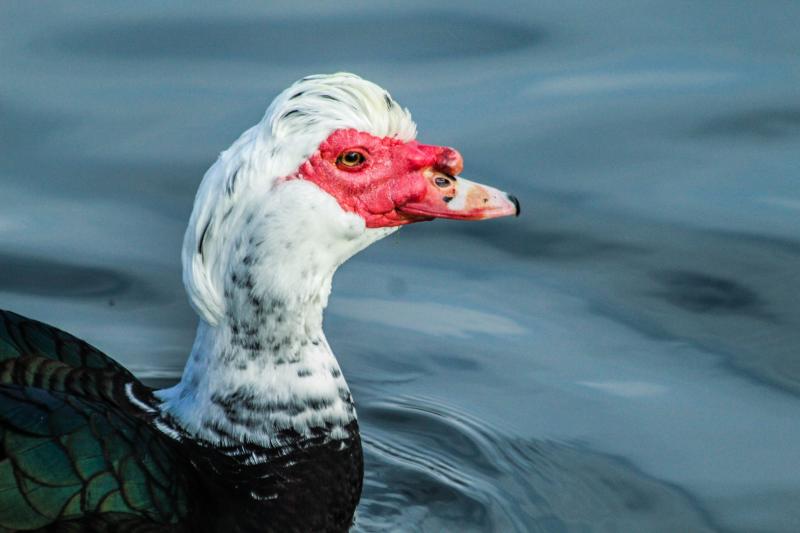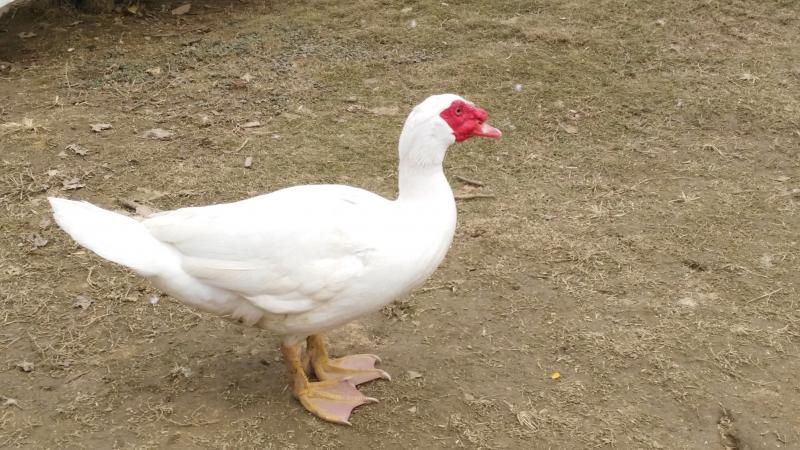
Chinese Muscovy ducks are originated from Middle America and South America. The major production areas are located in Fujian, Taiwan, Hainan, Guangdong and Guizhou Provinces. It is able to live under extreme cold weather (-12 ℃). It can be easily recognized by its red duckbill. It was first discovered in ancient Inca Period in south America, then it was introduced to Europe when Columbus discovered the New Continent in the 16th century. It was finally introduced to Fujian in 1729 by European businessmen. The “Annual of Quanzhou Prefecture” in 1763 said “Muscovy duck looks like a duck but its body size is larger than normal goose, it was introduced from abroad”. The original Muscovy duck has gradually evolved into Chinese Muscovy Duck by the domestication of local farmers. Chinese Muscovy duck has stable genetic performance and more adapt to the local environment, compares to the original Muscovy duck.
Chinese Muscovy Duck has a fusiform body shape, medium head, short and narrow duckbill. At the bottom of the duckbill around the eyes it has red or black balls, and a small ball at the bottom of the upper duckbill. The male duck is stronger than the female duck. On its head there is a row of long feathers, which will rise up if the duck is stimulated. It has wide chest and soft abdomen. It has long feathers on its tail, long wings that are able to reach its tail, short but strong legs. Normally it has black and white plumages, only a few ducks have silver grey color and russet color plumages.

